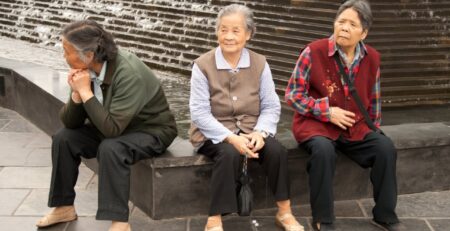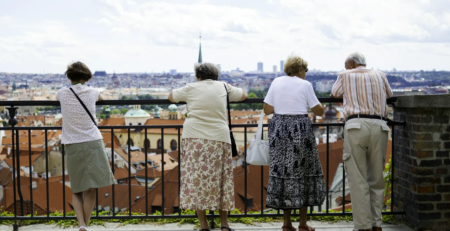How South Korea Is Tackling Its Demographic Crisis
Some 24.5% of South Koreans aged 70 and above were still working as of January, local media reported Monday, as officials increasingly look to keep more elderly in the workforce to address a demographic crisis.
Elderly employment figures have seen a steady increase since the country’s statistics authority started to collect the data in 2005.
Among these workers, half of whom are aged 75 and above, 42.1% are considered “simple laborers” by authorities, referring to workers with jobs that are not specialized and require just a few hours of training. Some 30% of them are working in the agriculture, fishing, and forestry industry, while 22.8% work in the social affairs and service industry.
South Korea is projected to become the world’s most aged by 2044 and the number of people in their 70s exceeded those in their 20s for the first time ever last year. Authorities are scrambling to address the country’s aging population, including efforts to encourage employment among youth as well as the elderly and boost low fertility rates.
To entice couples to grow bigger families, the South Korean government has even mulled granting military exemption to men who have three or more babies.
An aging population comes has wideranging effects, including increased healthcare and welfare costs. The country’s retirement age of 60—already raised from 58 in 2017—was first set at a time when life expectancies were shorter. Longer life spans today—and consequently longer time spent in retirement without income—have sparked economic fears within both the workforce and government. Labor unions in the country are urging companies to raise the retirement age again so workers can earn wages for a few more years.
South Korean authorities are welcoming the growing number of elderly workers as a solution to labor shortages caused by the demographic shift—a problem faced by several economies around Asia.
In neighboring Japan, which has found itself in the throes of an even bigger demographic crisis, one in every 10 people is aged 80 or older—making it the country with the highest proportion of elderly in the world.
Those aged 65 and older accounted for 13.6% of Japan’s workforce in 2022. Japan’s Prime Minister Fumio Kishida warned last year that the country was “on the brink” of social dysfunction over the demographic crisis.
China, which is considered a “super-aged society” by the World Bank, has also been trying to get more seniors working. People over 60 account for about 20% of China’s population and make up 8.8% of its workforce.
As China’s state media calls on retirees to re-enter the workforce, there are also discussions of raising the country’s mandatory retirement age, which is among the youngest in the world. Last month, Beijing released a silver economy plan promising to reorient its economy around the expanding elderly population, including investments in elderly products and services.
In Singapore, set to become “super-aged” by 2026, authorities are looking at further incentives to get more seniors in the workforce. The workforce participation rate among residents aged 65 and over, which has steadily increased over the past decade, stood at 31% in 2022.
Read more @time











